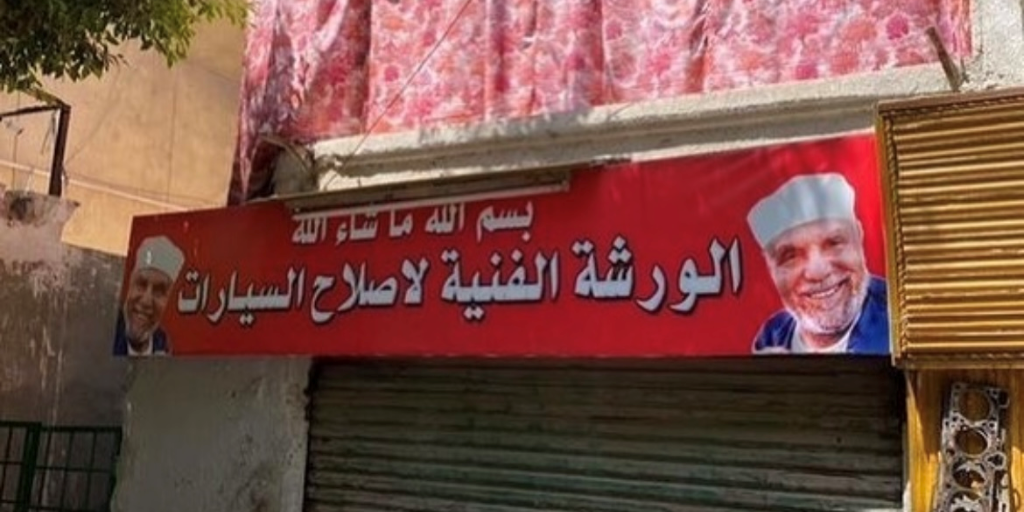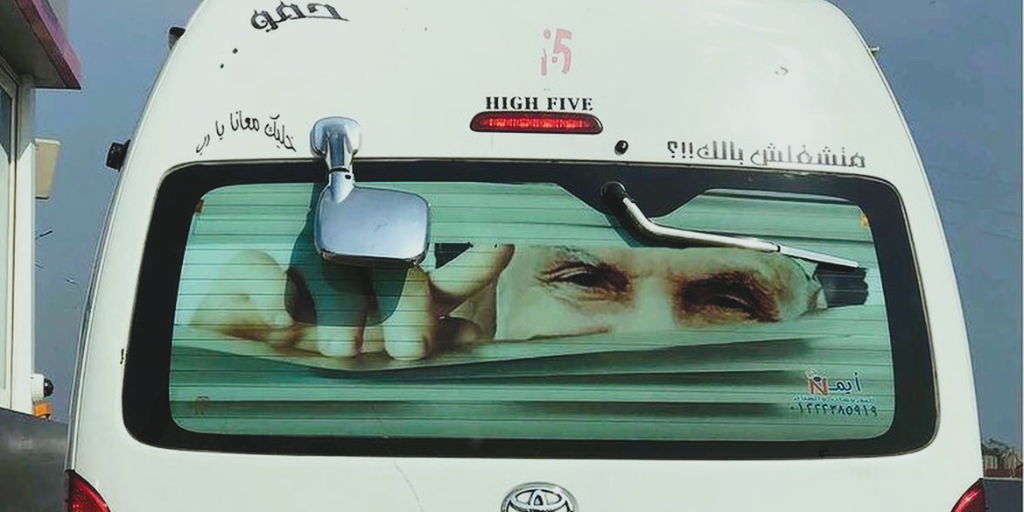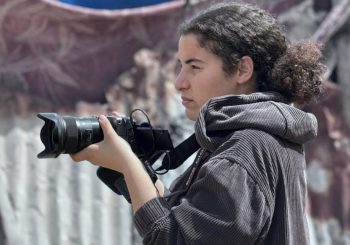Cairo’s streets are filled with images and symbols, some more subtle than others. On my daily commute from one side of Cairo to another, stuck in traffic, I frequently see a face smiling at me: Mohamed Metwali Al Shaarawi popularly known as Imam Al Duaa or the Imam of Prayer.
Shaarawi’s face is a poster on hundreds of vehicles, stores, and cafés, his voice constantly echoing through radios and televisions, even over 20 years after his death. He is a symbol and an icon to many Muslims in the Arab World, despite his famously controversial fatwas (rulings given by recognised Islamic authorities).
Shaarawi was an Azhar graduate best-known for the galvanizing, populist, and accessible nature of his preaching and for simplifying verses of the Qur’an. His television show was a staple in the homes of Egyptians airing every Friday after the Jumaa prayer.

He was also appointed to various governmental positions, most importantly as the Minister of Endowments in 1976. And, to this day, reruns of his show are aired whether on television or on the radio; his voice is iconic to Egyptian and Arab Muslims, as he is the only Egyptian sheikh ever to give a khutba (prayer address) at Mount Arafat, the mountain southeast of Mecca. In 2003, a television series called Imam Al Duaa was even made about his life.
An Instagram account by the handle of @spotsh3rawi was created on 4 May, 2021 with the mission of documenting Shaarawi’s appearances throughout the city. Using parody, memes, and visuals, the community the account has built around itself now has almost five thousand followers on Instagram – who can also contribute to the page by “spotting” Shaarawi: sending images or videos of Shaarawi they come across throughout their daily lives. The page is essentially attempting to reshape the narrative surrounding Shaarawi’s image.
“Everywhere I Go, I See his Face”
I spoke to the administrator of the account, who chose to keep their identity anonymous. When I asked about the reason behind the anonymity, they jokingly expressed their will to stay alive. I also asked them about the decision to censor the faces of contributors if they appeared in their submissions, since that was previously not the page’s practice, and they explained that they felt that it would be unsafe. Even if their followers asked to be featured, the administrator would refuse. We then spoke about the reasons behind Shaarawi’s religious and political iconism, his many cameo appearances throughout Cairo, and more.

There is a clear discrepancy between Shaarawi’s approach to Islam and the lives of modern day Egyptians. Despite that, he is widely idolized and glorified, which is essentially what compelled me towards the page and what I was most curious to discuss with the account administrator.
This blind glorification mirrors a cult of personality phenomenon. A friend of mine interestingly drew upon Stalinism and how, similarly, Stalin’s supporters idolized him to the point where their loyalty was unconditional even while facing persecution under his regime.
I imagine a kidney dialysis patient on his way to a session in a bus decorated with the infamous Shaarawi poster, his recorded khutba blasting on the radio, prohibiting said medical procedure — how is this vast worship-like admiration maintained despite the gap between Shaarawi’s fatwas and today’s Egyptian cultural understanding and practice of Islam?
When I asked the admin about his inspiration to create the account and document images of Shaarawi in public spaces, they said that they’re interested in visual symbols and archiving the “weird spread of a preacher present in every nook and cranny of Egyptians’ subconscious”.
We also touched upon the feedback they receive online, to which they said that it is mostly threats and insults but one of the most notable, and “strangest” interactions was when a woman messaged them on Instagram, deeply distressed because Shaarawi reminds her of her grandfather and the page makes her cry whenever she thinks about it. She then proceeded to wish that the administrator would rethink what they are doing and to “respect the man in his grave”.
They also noted the irony of the woman not being veiled and that she probably did not listen to Shaarawi’s speeches in which he explicitly shames women who dress “inappropriately” to “lure” men. This kind of purely emotional bond people have towards Shaarawi is not rare, and it is not surprising when he has been a consistent image of contemporary Islam in Egypt for decades.
The New Discourse
Shaarawi was a leading religious figure since the Sadat era; he even described Egypt’s defeat in the 1967 war as a victory for Muslims because it was a loss for communism. His presence afterwards was linked with a period of Egypt distancing itself from communism to infitah (Open Door Economic Policy) and a more pious presidential figure embodied by Sadat. Shaarawi contributed to a new discourse that was equally political and religious.
The admin also agrees that Shaarawi’s accessible language was a factor to his symbolism and sarcastically describes his posters plastered on microbuses as “legal window tint”.
When we spoke about where this outrage that follows any criticism leveled at Shaarawi is stemming from, they explained how this is a tendency to “deification”.

I believe the nature of Islam as an auditory religion also plays a role into that; it is almost like there is a need for a visual, tangible religious symbol to exist in public spaces and in everyday rituals. Ironically enough, Islam is an aniconic religion meaning that visual imagery is frowned upon, and it is prohibited to visually portray prophets for instance.
When asked about his stance on photography and hanging photographs at home – which is controversial amongst many sheikhs – Shaarawi himself did not have a clear answer. He said, “Photographs are permissible as long as they are imaginary and not misrepresenting reality or God’s creation.”
Yet, I still think plastering Shaarwi’s famous image on vehicles is similar to hanging a sibha (rosary) or displaying the mushaf – a visual representation of Islam that is essentially not in line with the auditory nature of the religion, however, in line with the performative aspect of Islam that is a widespread culture in Egypt.
Interestingly enough, the admin of ‘Spot Shaarawi’ said that the engagement with their content was much higher than they expected, but to them it was understandable given people’s boredom with what they described as the “official mainstream regressive narrative”.
I also could not help but ask if they had any initial fears when starting the page. They agreed that discussing any topic or symbol that even vaguely relates to religion or is a risk given the public’s intolerance towards challenging or questioning such narratives.
This makes sense: especially when it comes to criticizing Shaarawi, public outrage is expected.
In 2019 Asma Sherif Monir, a public figure and TV presenter, faced backlash to the extent of bullying and harassment when she stated on her Facebook page that Shaarawi’s religious approach is “extremist,” and she had to publicly apologize and retract her statement.
Lastly, I asked what many followers and fans of the page wonder: What is the goal of ‘Spot Shaarawi’? The admin simply put it as stripping the holiness surrounding an impactful idealized figure like Shaarawi, and challenging the mentality of deification. They described his impact as socially and culturally harmful at best, leading them to challenge it through parodizing the visual semblances of Shaarawi.
Some of Shaarawi’s famous controversial stances were deeming organ transplants and kidney dialysis impermissible in Islam, and various misogynist stances like claiming rape is physically impossible, blaming victims of sexual harassment, promoting FGM. Additionally, in a famous speech in the Egyptian parliament in 1978 following national protests, he stated that presidential authority and decisions should be indisputable. Lastly, in a shocking fatwa, Shaarawi deemed murder an appropriate punishment for missing prayer.
‘Spot Shaarawi’ is a new and fresh window into the symbolism and legacy of Shaarawi which demands a closer, more critical look. I do not think I have ever commuted in Cairo without his infamous smile catching my eye on a vehicle or even a kiosk sign, and to quote the page admin’s closing remark: “Remember kids, he’s always watching.”




Comments (5)
[…] […]
[…] […]